
In the busy digital world, using paid media is a smart move to reach new customers and gain an edge over your competition. Google and other studies have shown how powerful paid media can be. It can boost brand awareness by 80% and double the return on investment (ROI). Our firsthand experience has shown results go 10X and higher.
But how do you level up your paid media in order to keep growing your returns?
There are a number of challenges with paid media because, as with all facets of the digital marketing world, there are endless options and combinations. Being overwhelmed by all the choices or becoming overly ambitious can lead to decision paralysis or spreading efforts too thin. That's why keeping it clear and concise is crucial. Navigating this scene requires sharp focus — you've got to prioritize efficiency, smartly manage your budget, and — of course — make sure you're actually seeing a worthwhile return on your investment.
This is why fine-tuning your strategy is so important. Strategy isn't just about crossing your fingers and hoping for the best; it's about making the best happen. A well-thought-out paid media strategy shines a spotlight on your brand, targets the right people, and turns those clicks into measurable growth and revenue. But, without the right skills and knowledge, your paid media plan can quickly become a black hole for your budget.
In this guide, we share expert tips to help bring you clarity amongst the chaos and help you refine your paid media strategy with best practices so that it takes your growth to the next dimension. Specifically, we'll be diving into:
Paid media in digital marketing involves purchasing ad space to promote your business across various online platforms. This strategy is one of three media distribution types, alongside earned media - where your content gains exposure through external endorsements - and owned media, which encompasses all channels or platforms under a brand's direct control.
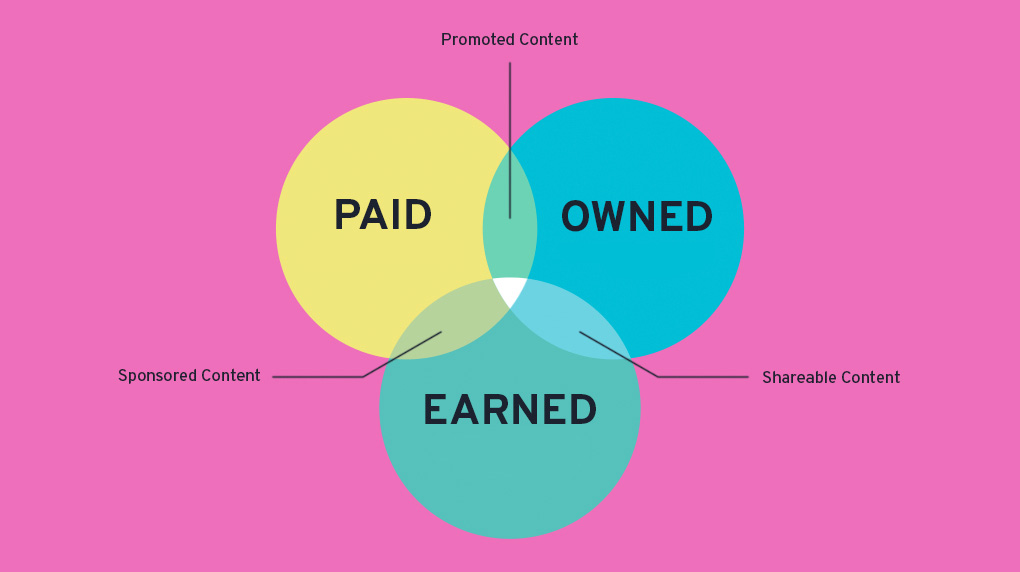
Paid media stands out as a dynamic tool within this trio. It enables brands to amplify their reach, target specific audiences, and drive traffic to their websites and other digital touchpoints. By utilizing a variety of channels and strategies, paid media aims to enhance brand awareness and also plays a pivotal role in nurturing the consumer journey from awareness to loyalty. This approach is important for brands aiming to maximize their digital footprint, ensuring that every stage of the customer's path is influenced by strategic, impactful advertising.
The way we approach paid media strategies has really evolved, thanks to tech advancements and how consumer habits have changed. Remember when internet ads were just those basic banner ads and pay-per-click campaigns? But then, as technology got better, paid media efforts started to get way more complex and effective. The game-changer was the introduction of big data and analytics, allowing marketers to really dig into what consumers like, prefer, and do. Plus, with social media platforms popping up everywhere, marketers got the chance to target ads more precisely, reaching exactly the right folks with incredible accuracy.
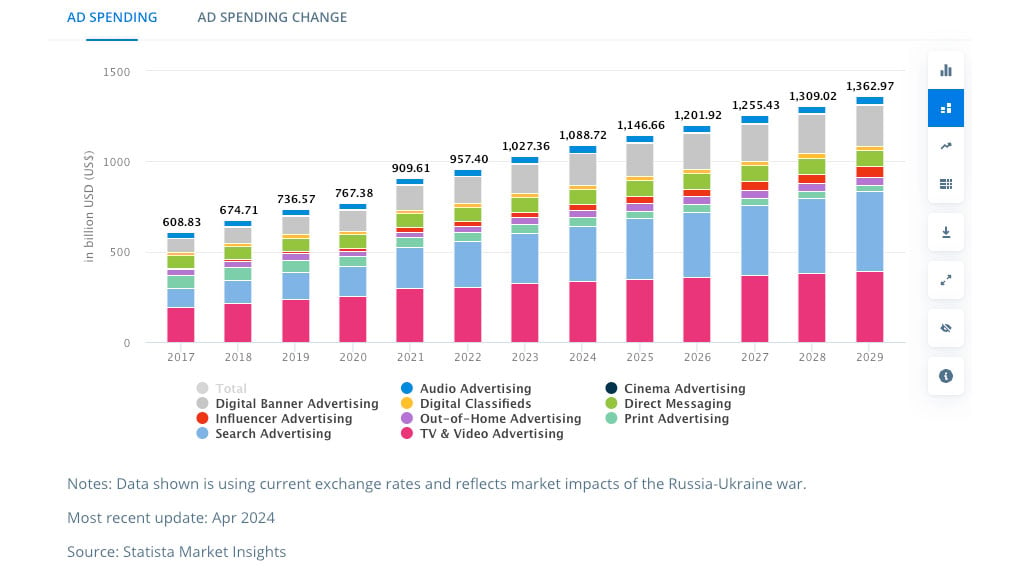
Plus, thanks to better algorithms, marketers can now deliver personalized ad experiences, greatly boosting the relevance and effectiveness of campaigns. When it comes to consumer behavior, the digital age has brought us a savvier and more empowered generation of consumers. People these days want ads that are relevant, personalized, and quick in their brand interactions. To keep up, paid media strategies are all about giving value to consumers, blending smoothly with content marketing, and using programmatic advertising to place ads in real-time based on how people behave. This dynamic environment highlights why it’s crucial to stay on top of tech trends and really understand what consumers need to make your paid media strategy hit the mark.
In this ever-changing landscape, let's spotlight the core elements that remain fundamental for any successful paid media strategy.
Begin by defining clear and measurable objectives for your paid media campaign. Whether increasing brand awareness, driving website traffic, generating leads, or boosting sales, having SMART objectives will guide your strategy and help measure success. These objectives will then dictate which KPIs are used to track the campaign's success.
It's also crucial that the chosen objectives of your paid media campaigns directly tie into your broader business goals. This alignment ensures that every dollar spent on marketing propels your business closer to its ultimate objectives, whether that's market expansion, customer loyalty, or revenue growth.
Determining the right media budget is not merely a financial decision; it's the foundation for your entire game plan. We understand that marketers want their brand to be everywhere, however, if you don't have a multi-million dollar budget, you'll spread your dollars too thin, which won't let any channel shine.
Therefore, it's important to allocate your budget strategically among different paid media channels, campaigns, and audience segments based on their performance and how they match your goals. Regularly monitor spending, track key metrics such as PPC metrics, and adjust budget allocations to get the best ROI and stay cost-effective.

Use data to identify and segment your target audience based on demographics, interests, behaviors, and other relevant criteria. This approach is crucial and should be revisited every so often. The more you research, understand, and refine your audience, the better you will be at tailoring your messaging and targeting strategies to resonate with them, thereby improving the effectiveness of your campaigns.
Picking the perfect channels for sharing your paid media content is key if you're looking to hit the mark with your audience. Each channel, from traditional media to search engines, social media, display, or native advertising, offers unique opportunities and advantages. With this in mind, your channel choice should be based on thinking about where your audience likes to hang out and what your campaign aims to achieve. It's also good to keep in mind that some channels are particularly complimentary to others - but more on that gem later.
Crafting compelling content that grabs and holds the audience's attention is key to sparking interest and prompting action. Align your content with the right platform in order to weave a consistent brand story and identity. Don't forget that diving into A/B testing and optimization is crucial for honing creative elements and boosting campaign results.
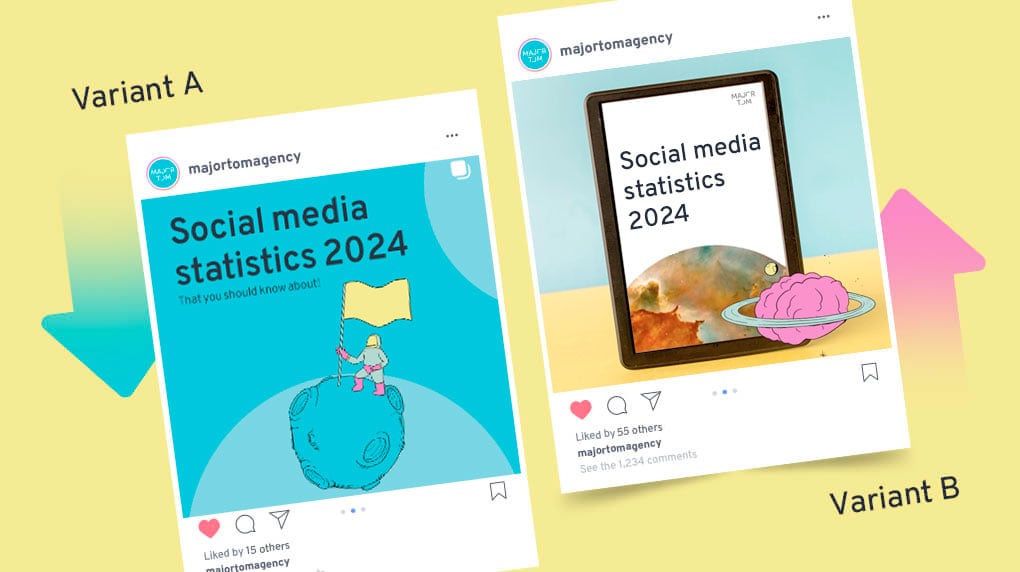
Plus, remember that even with top-notch tracking and targeting strategies, the magic touch of creative experts who can interpret data and fine-tune your creative is indispensable for unlocking your campaign's full potential.
Let's explore these points in more detail as our aim is to arm you with advanced techniques that elevate your results and ensure you stand out from the competition.
Audience targeting is one of the most critical strategies for the success of any digital media campaign. It ensures you are reaching a relevant audience and allows for greater accuracy when choosing who sees your ads. Studies show it takes a user an average of six website visits to convert to a paying customer. With such data, there is a need for digital marketers to use advanced targeting techniques to connect with users and bring them back to their platforms at the exact moment they are ready to become customers.
Some of the advanced targeting techniques to boost your paid media strategy include:
Marketers are diving into the technologies proposed within Google's Privacy Sandbox. For instance, the Topics API allows for interest-based advertising without individual tracking, and FLEDGE enables remarketing to groups of users with shared interests. These advancements strive to strike a balance between privacy and personalization.
In the absence of third-party cookies, contextual advertising is taking the spotlight. Advertisers are strategically placing ads based on webpage content to ensure relevance to the audience's current interests and engagement.
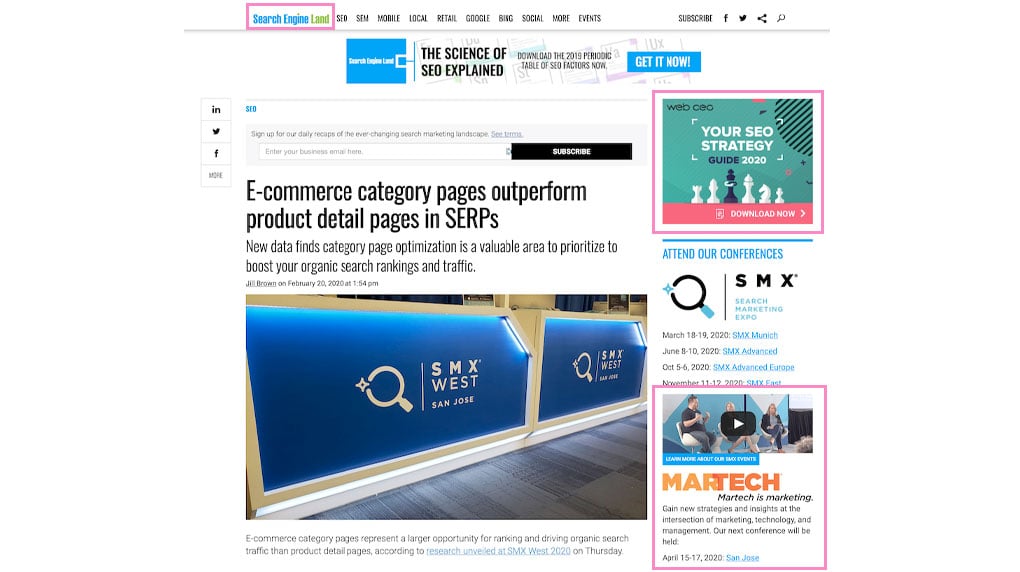
By harnessing data analytics and machine learning, businesses predict future consumer behavior based on historical data. This predictive power can forecast user conversion likelihood, customer lifetime value, and identify customers at risk for churn prevention strategies.
Setting a virtual perimeter around specific locations allows you to target your audience when they enter or leave the area. This strategy proves particularly powerful for local businesses, events, and engaging consumers near competitors' locations. QR codes that are thoughtfully placed can engage users with hyperlocal content. When the user scans the QR code with their smartphone, it can trigger location-specific ads or content, leveraging geolocation in a user-initiated manner.

Retargeting or remarketing involves showing ads to users who have interacted with your brand in the past. It offers a powerful way to re-engage prospects who didn't convert in their initial visit. This strategy usually delivers a higher conversion rate and improved ROI since you target users already familiar with your brand or have shown interest. Channels you can retarget on include: social media, search, website, and email.
Lookalike audience targeting is a powerful technique to reach new potential customers who are similar to your existing customers or target audience. This strategy leverages data analysis and machine learning algorithms to identify those who share similar characteristics, behaviors, or interests with your current customers. Although platforms such as Google and LinkedIn have retired this feature, they are still available on others such as Facebook - which even allows you to create up to 500 lookalike audiences from a single source audience.
Custom audience targeting is all about creating specific groups based on various criteria in order to get super personal and targeted with your messages. The main goal here is to boost engagement and conversions by crafting well-researched messages that deeply resonate with the audience group.
ABM is a B2B strategy that zeroes in on targeting specific high-value companies. It's all about crafting personalized campaigns for each account, diving deep into research and custom messaging to catch the eye of key decision-makers in the companies you're after. This approach needs sales and marketing teams to work closely together to pick out target accounts, come up with strategies, and keep tabs on how things are going.
LinkedIn is a powerful channel for Account-Based Marketing (ABM) due to its professional network, enabling precise targeting of key decision-makers. Its B2B focus, granular targeting options, and an array of tools like Sponsored Content and InMail support well-executed ABM strategies. We suggest creating a media plan for each key stakeholder in the targeted account. So, for example, you'll design a separate series of posts for the CFO, CEO, etc.
In addition to audiences, when you're developing your targeting strategy, it's crucial to consider other key factors that can significantly impact your campaign's effectiveness:
Even the top marketing pros sometimes struggle to pinpoint which paid channels will maximize engagement and deliver the highest ROI. Sure, you may want to be "everywhere" but realistically - that's a tall order. Instead, be strategic about your media mix and budget. A good rule of thumb? Do your homework to truly understand your audience's online behavior and make decisions based on that. You can also look at where you got the most engagement in past campaigns to help guide you further. Plus, don't forget to check out resources like Think With Google and Forrester for the latest on consumer trends.
Consider these key factors to help you craft the perfect channel mix and meet your goals:

Now, let's explore the three most popular paid ad channels.
Nearly 80% of businesses globally use Google ads for their PPC campaigns. Why? Google Ads is a powerhouse when it comes to effectiveness, speed, and getting more bang for your buck, both in generating brand awareness and boosting sales. It puts your pay-per-click (PPC) ads at the top of Google search results, using Google's reach to drive business results. Plus, the Google Display Network offers opportunities to advertise on popular websites, making Google Ads an ideal platform for both search and display advertising strategies.
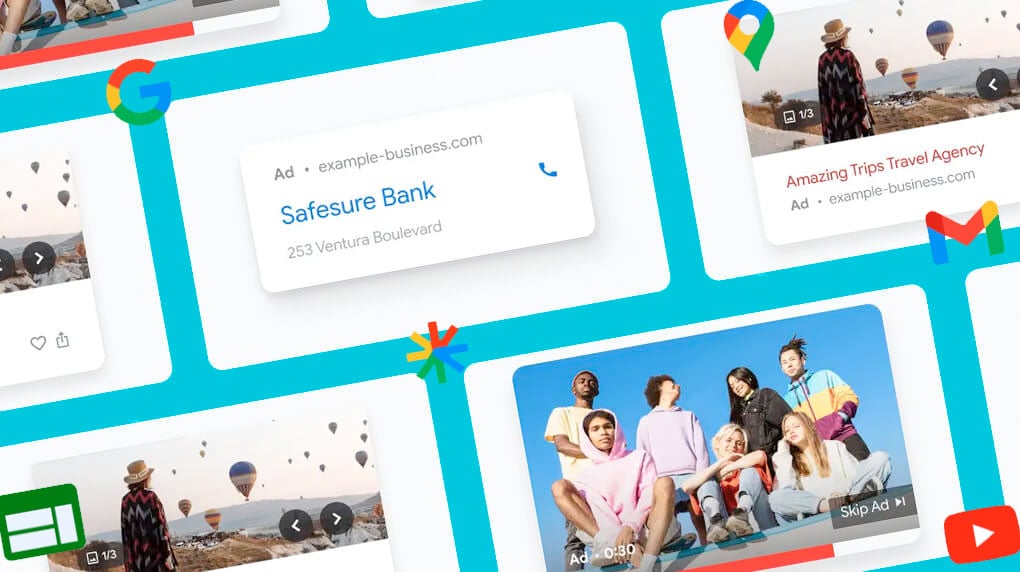
What's even better is that Google Ads isn't just one-size-fits-all. It has campaign types like Performance Max and Discovery to fit different marketing goals. Performance Max leverages Google's AI to optimize your ad performance. With Discovery campaigns, you can catch potential customers with personalized ads right in their Google feeds. Also, remember that Google owns YouTube and has its own video partners so it can be very valuable to add video content into the mix to strengthen your campaign strategy. Each of these tools are valuable for hitting your business goals efficiently.
Social media offers advanced targeting options, allowing marketers to reach specific demographics, interests, behaviors, and locations. And when comparing traditional advertising channels like TV or print to social media ads, social media is much more budget-friendly. You can set your own budgets and how you want to bid, all based on your goals. And let's not forget the insane reach these platforms have, with billions of active users globally. That means way more eyes on your brand. This is why so many brands execute a paid social media strategy. Plus, in case you were wondering, B2B social media strategies are also powerful.
To make sure you're hitting your goals and KPIs on this platform, it's key to dig into some data:
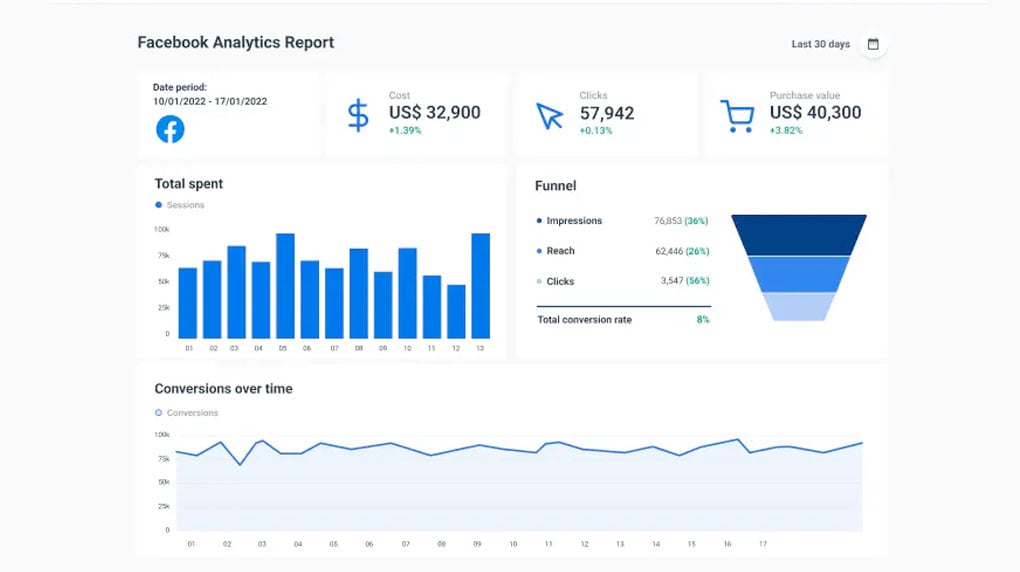
Also, to keep your campaign's performance on the up and up in the short term, think about:
Programmatic ads went from being a buzzword to making up for 72% of all digital display ad spending today. Essentially, "programmatic" is all about the automated buying and selling of ads. These ads use smart tech and algorithms to make media buying super efficient. Unlike other traditional media buying methods, programmatic ads use automation to figure out who to show ads to, making sure they hit the right audience, in the right place, at the right time.
It's also worth noting that with the removal of third-party cookies, programmatic ads will face challenges in targeting and tracking users, potentially affecting their efficiency and precision in reaching the intended audience. Advertisers may need to explore alternative targeting methods or rely more heavily on first-party data to maintain effectiveness.
“Cookie depravation will affect every platform including programmatic advertising. So DV360 and CM 360 will be impacted. Mostly it will change how data is collected and could potentially affect the scale due to privacy restrictions limiting access to data. However, Google, DV360, and CM 360 has known this is coming so they were actually preparing and developing different ways of collecting data for years. After cookies depravation, publishers and platforms will rely more on 1st party data, they also have been leveraging a multitude of signals that will help collect data differently, such as Mobile IDs, Connected TV IFAs, Advertisers' First party data, etc. DV360 and CM 360 on a back-end actually testing initiative (like a signal) called the Sandbox testing where they try to reconstruct the advertising ecosystem in a privacy-preserving way. The initial test showed that by using privacy-preserving signals, display ad spent went slightly down, like 2% to 7%, but CTR and ROI stayed within the status quo.” - Kate Dzianiskina, Media Manager
Connected TV (CTV) advertising is another related channel to help you increase your brand awareness. CTV ads are shown on devices like smart TVs or mobile phones allowing brands to reach people who love to stream.

Some of the strengths of these channels include:
If you're in B2B, here is a specific look at best practices for B2B programmatic advertising to check out.
DOOH blends digital and physical advertising by using billboards, screens in high-traffic areas, and other displays outside the home. Marketers grab people's attention in public places with content that changes depending on the time, place, and what's happening around them. This way of advertising gets the best of both worlds: it reaches a lot of people and also lets advertisers target and interact in digital ways, making it a super powerful way to catch attention. Discover more about DOOH and see inspiring DOOH examples here.
An increasingly popular strategy, sponsored content is all about teaming up with digital publishers to create and share content that aligns with your brand but in the publisher's style. It's not your usual ad; instead, it's about delivering something that's informative, fun, or educational, and it fits right in with what people are already checking out online. This approach is great for building trust, upping your credibility, getting your brand noticed, and engaging with the target audience.
Native ads are tucked into a website or platform's content, matching the look, feel, and function of where they're placed. They're crafted to blend in smoothly, offering a less intrusive ad experience.
While mostly seen as being earned media, the truth is that most influencer marketing situations are in fact paid media. And for anyone thinking this is just reserved for B2C brands, this isn't the case. Big B2B players like IBM and Cisco are in on it too. Influencer marketing is about teaming up with people who've got a big online following. Both B2C and B2B brands pay these influencers to give their products or services a shoutout to their followers, tapping into the influencer's credibility and wide reach.
Blending traditional and digital marketing channels can really ramp up a brand's reach and engagement. For example, when pairing a paid social media strategy with direct mail, the boost in brand recall and action is a game-changer. Social media brings precise targeting and gives you that instant back-and-forth, while direct mail brings that personal, trustworthy touch. Combining digital vibes with a tangible feel forms a killer marketing strategy that plays to the strength of both worlds, making sure your message hits home with consumers. This approach of using channels that complement each other smooths out the consumer journey, boosting awareness and conversions by catching audiences where they're most open.
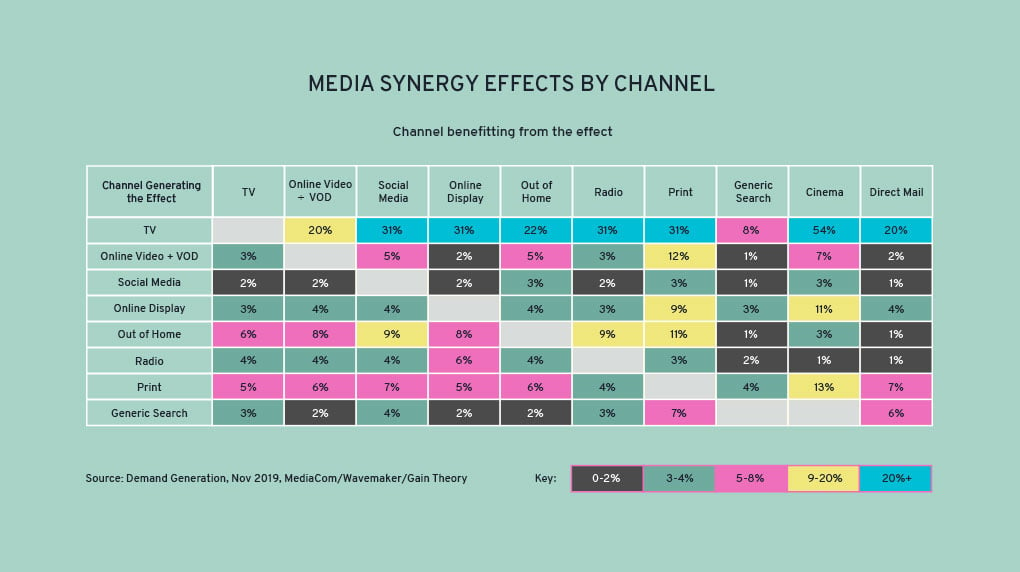
Experts agree that the creative element of an ad is the most crucial of them all. Basically, creatives are what your audience sees, and with the online world getting more crowded by the day, the ad that really grabs and holds your audience's attention wins. So, your ad's creative game can make or break your campaign, regardless of how spot-on your targeting is or how smart your audience strategy looks. Your audience really only cares about the story your ad tells, so it is crucial to get it right.
Memorable creatives stick with your audience, making them more likely to remember your brand. Ads that stand out with creative visuals, catchy slogans, or engaging storytelling are the ones people remember. They show off your brand's unique personality, tone, and look to help you stand out and attract those who resonate with it.
Here's how to create a compelling ad:
Throughout your digital campaign, keep testing different creatives with A/B testing. When ad fatigue starts to set in, swap in something new to keep things fresh and users engaged. For this to truly work, it's vital for your media and creative teams to be in sync.
Tip: If using traditional media too, we suggest testing your ideas on digital channels first since it's easier to tweak and optimize there. Then once you have creative performing well, transform it into traditional assets. Use what you learn from these quick digital tests to make your traditional marketing even better.
To make the most of your paid media budget, you need a mix of creativity, precision, and a solid grasp of your marketing funnel. Start by asking, "What's a new client worth to me, and how much can I afford to spend to get them?" Then, get a good handle on your customer lifetime value (CLV), cost per acquisition (CPA), cost per lead (CPL), and base your budget on your current conversions. In short, you want to tweak your campaigns to get better conversion rates while also reducing the cost per lead.
Here are some of the recommended strategies to optimize your paid media ad budget:
Today, AI is changing the game in marketing by making budget allocation and optimization smarter. With the help of AI-powered analytics, marketers can dive into huge datasets to uncover valuable insights and patterns that help make smarter budget decisions. Plus, by using AI-powered predictive models to anticipate customer behavior, marketers can identify the best marketing channels and allocate their budgets where they have the greatest impact, thereby boosting ROI.
![]()
To make sure your digital marketing efforts really hit the mark, it's key to keep a close eye on your metrics and ROI. It's not all about how much cash you throw at it but how smartly you use every dollar to boost your brand's value. Making sure you've got good data quality means you'll get insights you can trust. Plus, using KPIs helps businesses keep an eye on how things are going and tweak campaigns to get even better returns.
To truly get the most out of paid media, it's essential to focus on the quality of data you're analyzing. High-quality, accurate data is the backbone of any successful marketing strategy, allowing you to refine your approach, make smart calls, and boost the performance of your campaigns. On the flip side, if your data’s not reliable, you could end up making moves that don’t pan out, wasting money, and seeing your campaigns flop. That's why it's important to use advanced analytical tools and methodologies to gather, crunch, and make sense of your data. This helps you spot what’s really going on, understand what makes your customers tick, and ultimately, achieve a better ROI.
Navigating the vast ocean of data available in digital marketing presents several challenges that can significantly impact your campaign's performance.
To counter these challenges, it's important to focus on good data practices.
Achieving these standards sets the foundation for insightful analysis and decision-making.
Getting over these hurdles hinges on one key idea: setting up a Single Source of Truth (SSoT). Basically, this means pulling together a reporting tool that can compare metrics from different platforms—which is crucial since platforms often don't see eye to eye on data. This streamlines the whole data analysis process, making sure you're comparing apples to apples. Now it is possible to correctly compare channels against each other to identify the best course of action.
Tracking your paid media KPIs helps you judge your campaigns' success and make data-driven decisions. There are loads of KPIs out there, and the ones you end up focusing on really depend on what kind of campaign you're running, how you're buying your ads, and what you're aiming to achieve with your campaign. For example, checking out relevant lead indicators can give you a sneak peek into what might happen in the future, helping you make the right moves now to boost customer acquisition.
Here are the top paid media KPIs to track:
The selection of KPIs will vary based on the channels and goals of the campaign. For instance:
If you're running PPC campaigns, we highly recommend you read:
Mixing paid media into your overall marketing game plan means making sure your paid ads align with your business and bigger marketing ambitions. By lining these up, your paid efforts boost and back up what you're aiming for in your full-on marketing strategy. Syncing up all these elements lets you craft a solid and impactful marketing approach that really hits the mark. For instance, you can push a new product launch with paid ads while also using organic social media posts and content marketing to add more depth and drive engagement.
Today, paid media strategies have undergone a radical transformation due to tech advancements and shifts in consumer behavior. AI is impacting every aspect of paid media while stricter privacy laws are making tracking more difficult. If brands want to stay successful, they've got to keep up with the latest trends and be open to testing out innovative digital marketing strategies.
Below are some of the key developments to help you future-proof your paid media strategy:
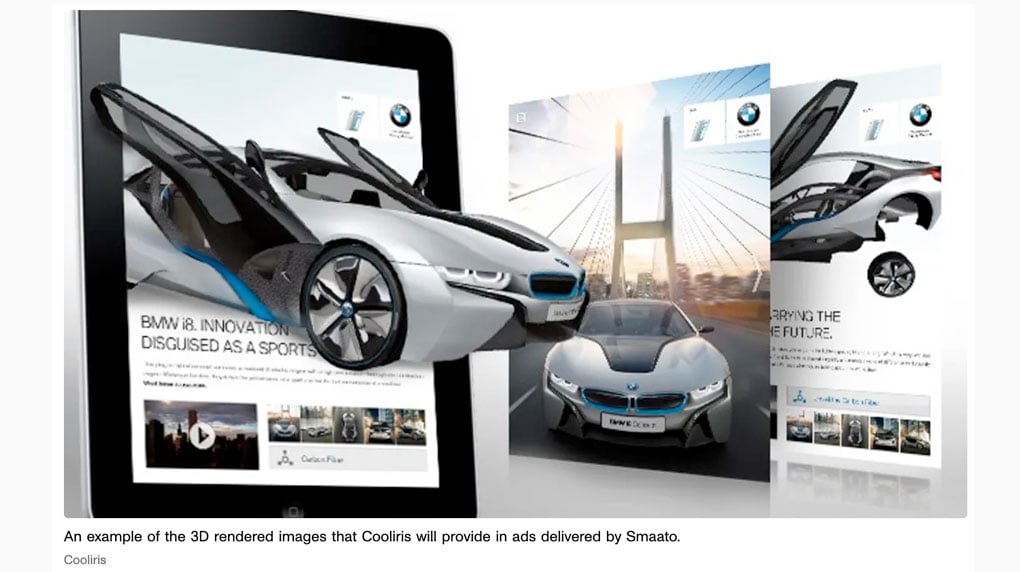
Recent industry stats show that mobile video spending is projected to hit $53.9 billion by 2025. Brands really should jump on the opportunity to create engaging video content and team up with influencers who resonate with their audience. Here are some other up-and-coming ad formats you should keep an eye on:
The move away from third-party cookies means marketers need to switch up their ad game. Normally, these cookies help marketers target ads super accurately and track where users go online. Without them, digital ads are going to get a little trickier, even though Google and programmatic platforms have been working on alternative solutions. This makes it tricky to retarget users or see how well ads are converting across different sites. Given this change, brands are building up their own data to stay in the game. Here are some tips for handling a world without cookies:
To support your current and future programmatic efforts, read Advanced programmatic display advertising strategies you can steal.
As we "hinted" at earlier, what consumers like, how they act, and the media they use are always changing. Marketers need to keep up with these shifts and tweak their game plans to match. When you understand the reasons behind new audience trends, you gain the power to switch up your marketing moves in strategic ways. Here are some consumer behavior trends to watch:
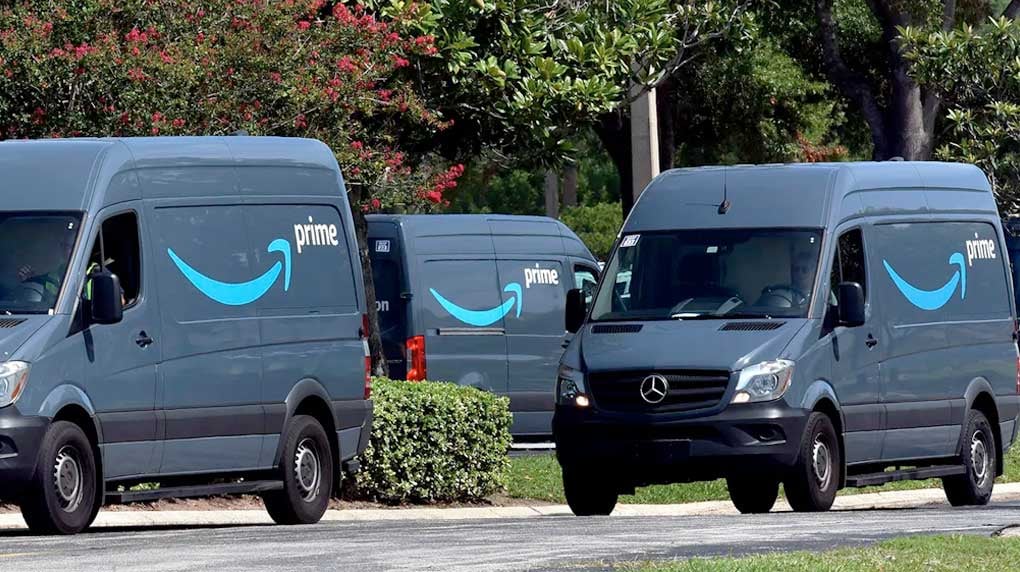
Brands need to keep an eye on the latest tech and be ready to dive into new, cutting-edge options to remain competitive in digital marketing. By experimenting with new tech formats, marketers can figure out which innovations really make a difference and bring in the best ROI. Check out these emerging technologies that are worth watching:
Here are some successful, real-world paid media examples from leading brands to inspire you:
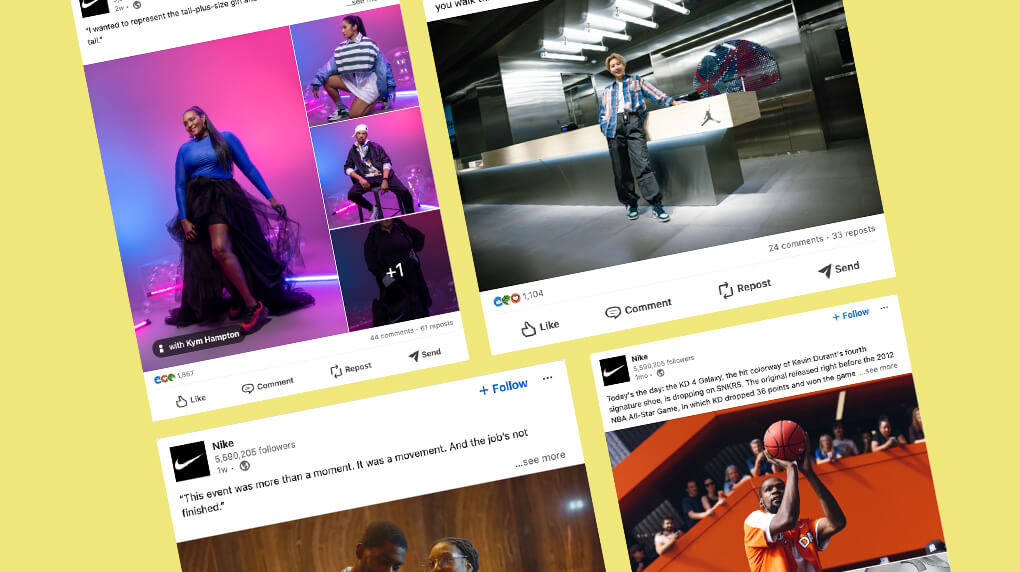
Nike uses a mix of paid media channels along with its robust owned media to boost its brand and product messaging to a wider crowd. These paid media channels include display ads, video ads, search ads, social media ads, and collaborating with influencers. They really focus on using paid media to reach those who might not know much about Nike or what they offer, especially when it comes to their newest products. For example, they smartly place display ads on websites or apps that their ideal customers hang out on, covering everything from sports and fitness to lifestyle vibes. Plus, they take advantage of video ads on platforms like YouTube and TikTok to show off what their products are all about, highlighting benefits and innovations through engaging stories.
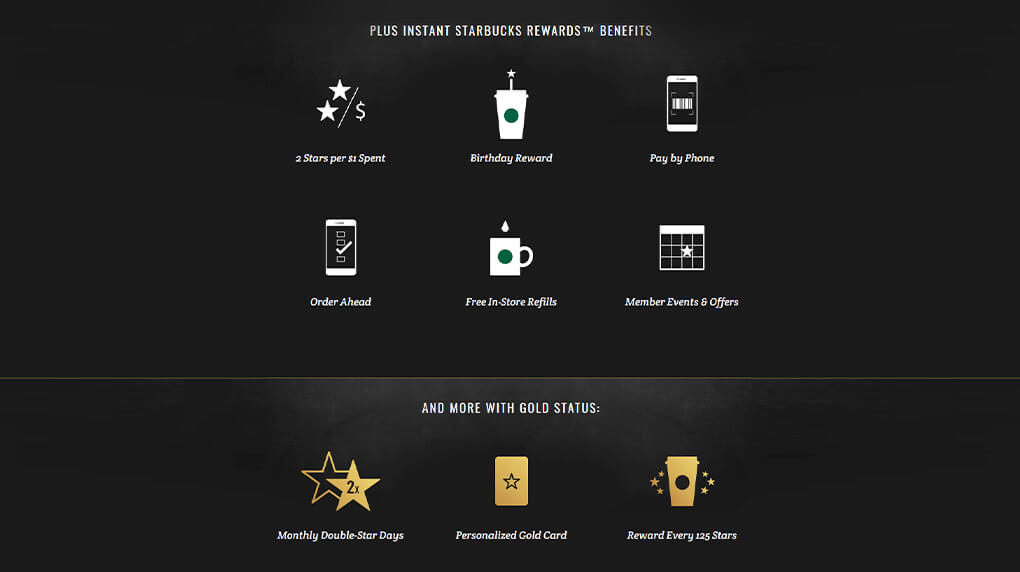
Starbucks is arguably one of the kings of omnichannel marketing at scale. They use their numerous physical store locations, their prominent website, mobile app, and social media to really engage their audience and boost sales. Plus, Starbucks has a loyalty program with complimentary rewards cards you can top up on their website or app. It's a smart way to encourage repeat purchases and make things super convenient for customers.
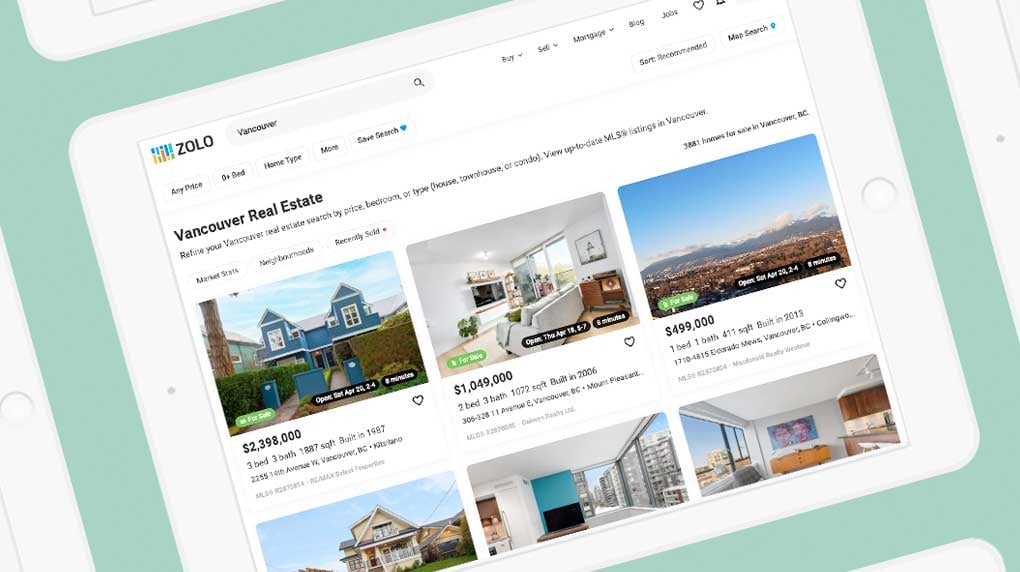
Zolo is not your ordinary real estate company. And for the last 14 years, Zolo has achieved incredible growth with a database of over 8 million properties and 150, 000 active listings.
This is because Zolo focuses on marketing solutions that empower their customers with data, knowledge, and access to the best agents, thus making sure their customers get a smooth and easy real estate experience. They sought out our help to double their growth year-over-year while reducing their CPA.
Our experts at Major Tom knew just what to do - diving into paid search with Google AdWords. We took Zolo's game to the next level by bringing in AI and machine learning to smarten up their keyword targeting. This move made launching ads faster than humanly possible, leaving traditional methods in the dust.
We designed a system to keep Zolo's listings fresh by automatically updating and uploading over 70,000 active listing URLs in Zolo's targeted regions every 15 minutes. Following the success of this strategy, we continued to innovatively automate other areas of Zolo's digital marketing. This innovative and goal-smashing strategy made us a Google Premier Partner Awards finalist.
Feel free to browse our own case studies where we provide insights into:
In the whirlwind world of digital marketing, you can't just decide on a strategy and call it a day. It's a continuous, dynamic process. This way, brands can be agile, quickly reacting to the latest market trends, shifts in consumer behavior, and what the competition is up to. Regular check-ins and tweaks to your strategy mean you can grab new opportunities, dodge potential setbacks, and make sure your marketing is always hitting the mark and lining up with your big-picture goals. Basically, staying on top of your strategic planning game lets companies roll with the punches and thrive in the ever-evolving digital marketplace.
We also encourage you to think one step further. If you're in the B2B space, for example, what tactics and tools can you optimize in your sales enablement process to help your sales team convert all of the leads generated from a paid media strategy into actual sales? There's always room for improvement if you're proactive and creative enough.
You've decided that you'd rather hire an agency vs going in-house - great! Getting you the best ROI possible is exactly what Major Tom has been designed for. With over 23 years under our belt, we've fine-tuned our approach to deliver solutions that really make an impact, proving the true power of a solid paid media strategy.
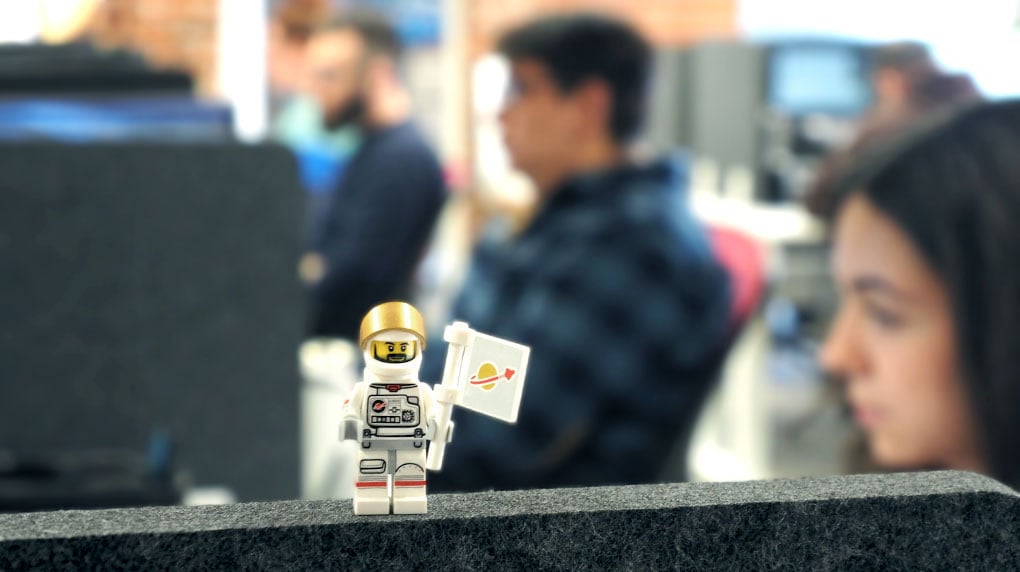
We combine strategic know-how and creative skills to make sure your paid media campaigns captivate and engage with your audience with the perfect message, at just the right time, in just the right spot.
Our 4-step approach —Explore, Strategize, Execute, Optimize—and cross-department collaboration (see our full range of services), lets us seamlessly manage every aspect of your paid media strategy with precision and expertise, turning potential into performance. Plus, we're all about keeping things clear and open, so clients receive real-time reporting dashboards and competitive benchmarking, along with actionable recommendations that drive innovation and growth.
Being certified partners with top marketing and social media platforms, gets us access to exclusive beta features and advanced tools, positioning your campaigns a step ahead of the competition. Also, with premier tools like Comscore, Nielsen, and, DB360 at our fingertips, we dive deep into market trends, audience behavior, and detailed campaign analytics. This special access lets us craft data-driven, optimized strategies that not every agency can offer.
Whether it's navigating the latest trends, crafting compelling content, or selecting the optimal channels, Major Tom is here to guide you through the complexities of paid media marketing. We're all about clarity and precision, with a laser focus on ROI and tracking performance to keep making things better. Want to see the real deal? Take a peek at our unfiltered client reviews. Got a project in mind? Don't be a stranger, reach out and see how we can boost your paid media game.
Receive exclusive action-focused content and the latest marketing insights.